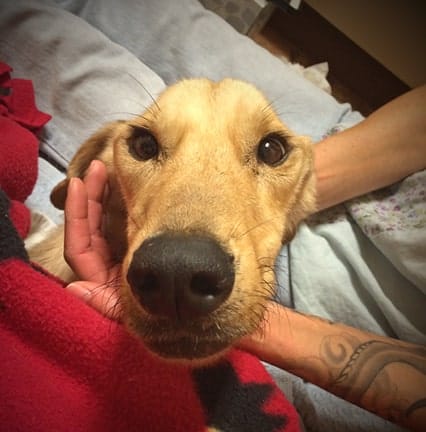The Compassion Question
com·pas·sion
nounsympathetic consciousness of others’ distress together with a desire to alleviate it ¹
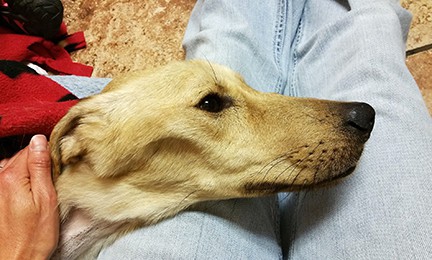
Martin <3 c. 2010 ~ 01.25.2016
I CAN NOT UN SEE, and what I saw today was UNREAL.
I’ve been volunteering in rescue for a number of years now but I know I still have a long way to go, a lot to learn, a lot to live. With every dog, it’s something new. The lessons are daily and the evolution of me continues.
*** WARNING: THIS ARTICLE CONTAINS GRAPHIC PHOTOS AND INFO ***
Today I rescued a dog from his rescuers. It’s the worst experience I’ve had yet, one I’ll never forget and will re-live over and over again for a long time.

There comes a time when silence is betrayal.
Dr. Martin Luther King, Jr.
As an animal rescuer, I believe in conscientious rescue: I want to do it the right way. But what is right? Rescue didn’t come with a manual. We make it up as we go and hope that our innate sense of ethics, our individual moral principles, guide us down the right path for each life we accept as our own.
Well, why do we get into rescue? It’s an emotional roller coaster that takes years off our lives, time away from our families, money out of our bank accounts. Why?
The answer is compassion – the sympathetic consciousness of others’ distress together with a desire to alleviate it.¹
It’s a double edged sword and more dangerous for some than others; perhaps more dangerous for us all the longer we rescue. It manifests differently within each of us and our response may seem slightly skewed to some while not to us/others. And besides, there’s no manual for compassion either so it’s all subjective, isn’t it? Compassion may be closely related to love and the emotions evoked in both.² Throw in some furbabies who have suffered at the hands of vile humanity and this really complicates things. We have difficulty separating heart, mind and soul; trouble defining when to say when. We struggle to perceive quality of life over life at all costs in the immortal battle of good against evil.
As a responsible animal rescuer, one of our duties is to know when. When to say yes. When to say no. When to say I’ll consider and get back to you.
When to say goodbye.

Nothing in the world is more dangerous than sincere ignorance and conscientious stupidity.
Dr. Martin Luther King, Jr.
When we can’t say no and we keep saying yes, and quality of life and level of care starts to slide because there are just too many to care for – the ‘when’ has already passed (and we’re most likely hoarders). When we keep them alive for ourselves and not for themselves, the ‘when’ has already passed and now we’re just being weak and selfish. At this point we really need to step back and reevaluate, perhaps ask for help from trusted others.
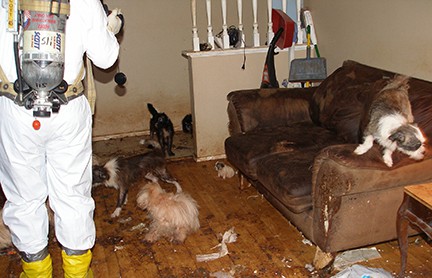
Here is a well written article about a major hoarding case in CA and the dangers of rescue hoarding via Los Angeles magazine – July 2015
Did you know that brain scans of hoarders show abnormal patterns in decision making regions? ³
What I saw today was no longer rescue, no longer compassion, no longer empathy or altruism. It had corrupted into cruelty in its most tragic form – that of misguided compassion.
But when does compassion become cruelty??
This is our angel boy Martin from Mexico. We believe he was hit by a car 5+ years ago and left to die on the streets by his owner. A vet pronounced that he had suffered spinal cord damage and would likely never regain use of his back legs. He was taken in by a local rescuer who did his best to provide for Martin’s medical and other needs. At some point Martin allegedly started chewing into the bone of his hind legs so both were amputated. The skin of his rear began to rub raw due to the friction of dragging himself around, eventually exposing flesh and then bone. About a month ago, Martin’s appetite decreased, he ‘started losing weight’ and started falling over to the right.
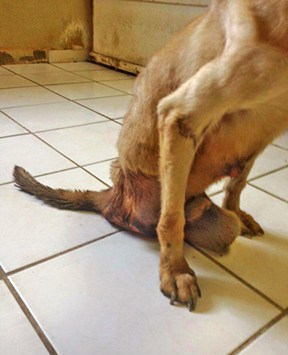
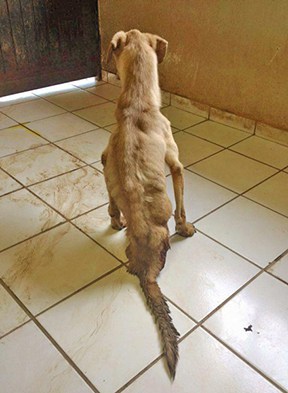
We learned of our sweet pup when his first rescuer reached out for help, saw a few blurry photos, and agreed to do our best to help him have a good life in the States as a WDR forever foster dog. We thought we were getting an incontinent, emaciated dog with no hind legs and a potential tumor. I wasn’t sure how long we would have with him as that giant mass on his right side was of grave concern. Little did I know that the mass was not the issue.
The dog I met today was missing the rear end of his body, had been slowly dying of starvation and infection, was covered in scars and pressure sores, with punctured foot pads, overgrown nails, a tail leaking pus, and the sweetest disposition of any dog ever. He was the front portion of a skeleton covered with a thin layer of skin and fur. And that was only the beginning.
***
GRAPHIC
PHOTO
***
What I saw when the blanket was lifted away will be burned into my fucking retinas for as long as I live. No, this wasn’t a cancer nor was it a prolapsed anything. This was the inside of the dog’s body. His rear end was gone. We couldn’t define where his anus was and his urethra didn’t connect to anything. The open wound ran from the prescrotal region to the anus and over to where the right hip would have been. Urine was leaking out of this enormous open area and pooling on whatever exposed flesh was below it. There was a combination of granulation/scar tissue, necrotic tissue and areas of exposed, raw full thickness of bone. There was still a section of the right femur present but he was missing the head of the right femur and a section of the right side of the pelvis. It was such a mess that our vet would need to reference an anatomy book for landmarks. The level of emaciation in this dog didn’t happen in a month, and he had a grade 5 of 6 heart murmur, more than likely heartworm and possibly other diseases common to Mexico such as erlichia. He was so pale. He may have had some brain damage which can only be hoped for now.
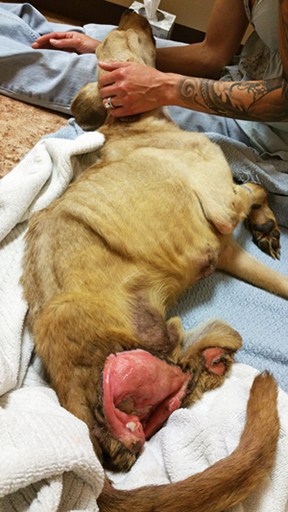
We had no other decision to make beyond granting him his dignity and freedom. The winning lotto ticket and all the surgeons in the world would not have been able to give this animal what he needed. Maybe a year ago, two years ago, who knows. Our beautiful sweet Martin left this shitty world chowing down happily on a bowl of canned food, high as a kite, pain free and surrounded by softly crying women who loved him dearly.
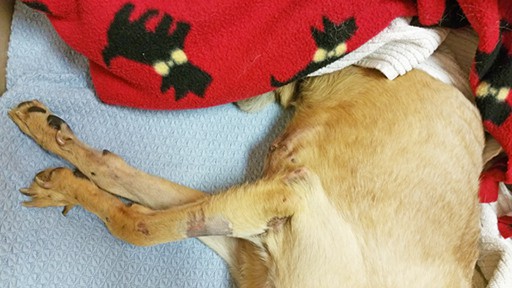
There are so many things about this experience that I haven’t been able to stop thinking about, but what I think is more unsettling than even the suffering this poor dog must have endured for who knows how long is the fact that this was done by rescuers – one of us.
What’s so difficult here is that there’s no one to hate, no ‘villain’ to be mad at. It’s not Michael Vick, it’s not an animal abuser. It’s someone who supposedly cares about animals and has dedicated their life to saving them. But save at what cost? Any life is better than no life? You really do hate them and want to shame them but it’s like shaming a child who thinks they’ve done a good job. It’s so complex.
Martin saw vets in Mexico multiple times over the years, including beginning and end 2015, and Jan. 2016 right before crossing the border. THESE VETS DID NOTHING OTHER THAN DISH OUT MORE MEDS AND SCRUB THE DOG CLEAN BEFORE HIS TRIP. Yes, you read that right. They bathed and scrubbed his entire body and the open fleshy area. It was pristine. I felt like vomiting – it was as if we were at the butcher counter looking at clean slabs of animal meat for dinner. WHAT THE FUCK, PEOPLE? Who does this? Or really what I’m asking, I guess, is
Who does nothing?
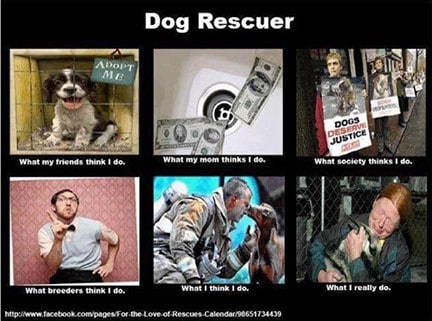
To me, this one was a no brainer and yet I almost got caught going down that same road of Martin’s first rescuer. It was immediately clear to me that this dog had long ago passed an acceptable quality of life and should have been released from his ravaged body, so we would do that for him. But he was still ravenously hungry, mobile and wagged his tail for his people (not paralyzed back there, ugh!). Those were the signs, weren’t they? Couldn’t we just give him a couple days of being spoiled in our foster home before sending him to the bridge? Geebus cripes, people, do you SEE what I just wrote? What I asked that day? I thought the same as his rescuer in Mexico!! The other rescuer simply believed it for years longer than I, but does that make me any different, really? I wanted to keep this dog alive for me! Thankfully what does set me apart from the other rescuer is that my friends and peers called me out on it and helped me to see what I had said, where I had gone. Phew, that was a damn close one. A crucial lesson in my rescue life. Unfortunately for Martin, no one in Mexico said anything to his first rescuer.
There comes a time when one must take a position that is neither safe, nor politic, nor popular, but he must take it because conscience tells him it is right.
Dr. Martin Luther King, Jr.
Well, who polices the rescue community?
The answer to that is no one. WE police ourselves and each other. Society hasn’t evolved enough to do more than react when the level of inhumanity, cruelty and abuse is so great that it’s obvious even to a blind person – dog fighting rings, hoarding cases, abuse and torture scenarios. But at our level, that of private rescuer(s), there is no one to govern us but our own souls.
So at what point in our rescue careers do we lose that ability to make sound decisions? When do we lose the conscious part of compassion? And when we’ve lost that consciousness, what then? What about situations that aren’t so crystal clear? What about other countries where animal welfare issues are far greater than in the States and yet they pale in comparison to the human welfare issues in those poor parts of the world? Those people have problems WAY bigger than a dog or cat or other animal. And yet there are more unwanted and uncared for animals in those countries than anywhere else, procreating.
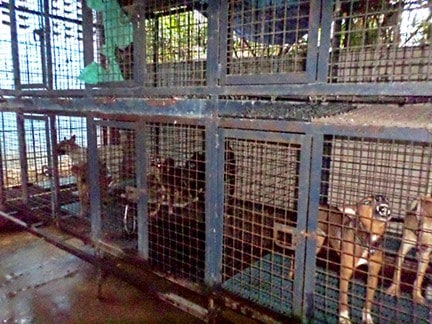
Animal shelter in the Philippines
Thankfully there are caring humans worldwide and people struggling to provide for and save the many unwanted souls around them. But they have SO much need and nowhere near enough resources to go ’round. So then what? Do we support quality or quantity? Do we let that dog over there slowly die of starvation so this dog here can have full meals? Do we leave that other dog to fare on his own on the streets, likely getting hit and paralyzed and torn apart and left to suffer unimaginably so this dog can have a larger cage and more dedicated volunteer time in the only animal shelter servicing a vast area?
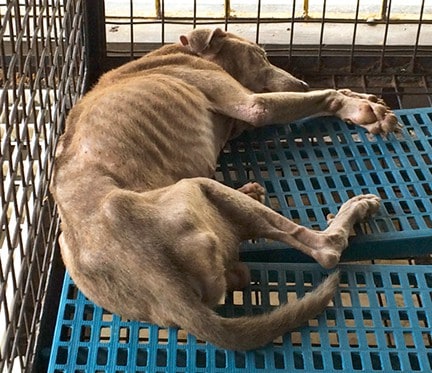
Dog in shelter in Philippines. Yes, she is alive but at what cost? What life is this??
Or do we take them both in, put them into the same small cage hardly large enough to turn around in, give them one meal to share out of the same bowl every other day or three (because there are hundreds others doubled up in cages just like this one), living their remaining lives on wire grates so their waste can fall thru the holes since there’s no one to take them out for potty breaks, exercise, companionship and life enrichment? There are two lives saved now and not just one. That’s better, isn’t it? Or is it? Once their health starts to deteriorate due to lack of vaccines or meds, unsanitary living conditions, not enough food and water and help; and their mental health goes too and they pace endlessly back and forth, back and forth, up and down, back and forth – when do we make the decision that this really is no life and they would be better off dead?
WHEN??
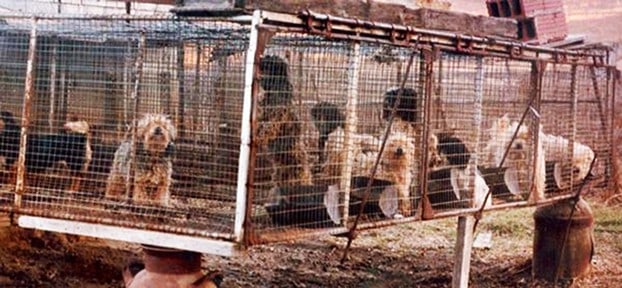
U.S. puppy mill:
How are we any different from the impoverished countries and their stacked cages? Oh wait, they’re doing it out of compassion. We’re doing it out of GREED.
What about dogs like our beautiful Sherman* who’s growing old in a boarding kennel because we can’t find anyone with the time, skills and dedication to help rehab his severe separation anxiety? Do we let him celebrate 10 more birthdays locked in a kennel, not enjoying a real family and warm home with cushy dog beds and lots of toys and things? Now that ain’t so crystal clear, is it? What about a dog with cancer? Shall we do chemo even though we know the dog doesn’t understand why all this is happening and why he feels so bad? Are we doing it for him or for ourselves? Is no compassion better than misguided or selective compassion? Isn’t a lack of compassion what’s wrong with the world to begin with? There’s no black and white, no cut and dry, no clarity. It’s all grey, so grey.

Unfortunately I don’t have the answers, and these rescue experiences keep evolving my views and ethics. I’m still a newbie in rescue, really. Many of my peers have been doing this for a decade, decades. I have so much to learn, so much to experience, so much to evolve. So much to do. What I do know, however, is that my heart gets me into things, my mind provides solutions, and my soul finds the balance between the two. What is equally important to my/our success and longevity are the people I surround myself with – my friends, family, peers, fellow rescuers and volunteers, our adopters, vet teams. These people are my police so I must choose wisely, and I have. Oh, I have.
I also know that I believe in quality over quantity, that there are things far worse than death, and that compassion requires consciousness otherwise I need to get out of rescue. Beyond that, I guess I’m still learning.
Run in paradise, sweet Martin. Thank you for these life lessons and allowing us to help you to freedom.
